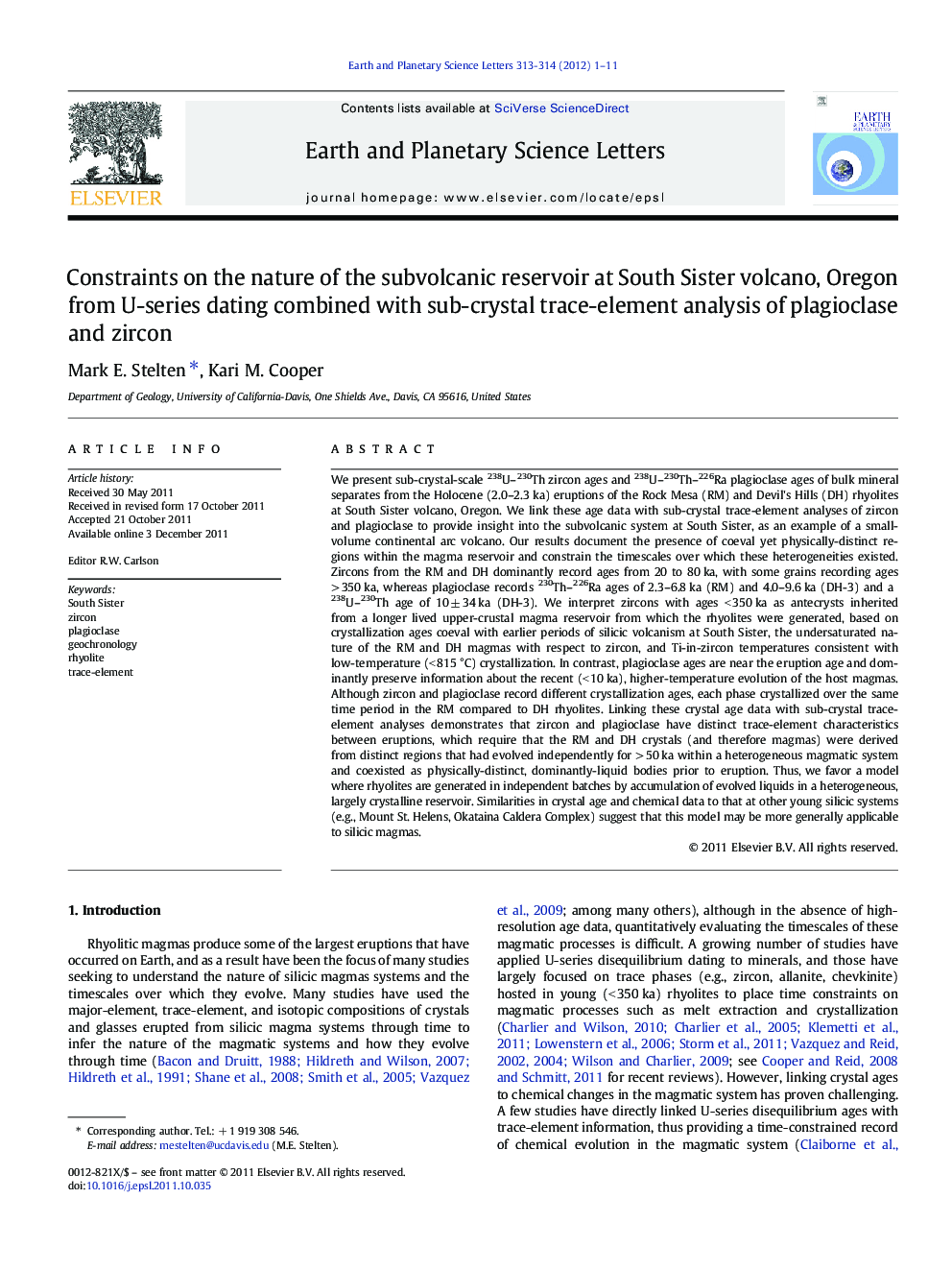| کد مقاله | کد نشریه | سال انتشار | مقاله انگلیسی | نسخه تمام متن |
|---|---|---|---|---|
| 4677662 | 1634814 | 2012 | 11 صفحه PDF | دانلود رایگان |

We present sub-crystal-scale 238U–230Th zircon ages and 238U–230Th–226Ra plagioclase ages of bulk mineral separates from the Holocene (2.0–2.3 ka) eruptions of the Rock Mesa (RM) and Devil's Hills (DH) rhyolites at South Sister volcano, Oregon. We link these age data with sub-crystal trace-element analyses of zircon and plagioclase to provide insight into the subvolcanic system at South Sister, as an example of a small-volume continental arc volcano. Our results document the presence of coeval yet physically-distinct regions within the magma reservoir and constrain the timescales over which these heterogeneities existed. Zircons from the RM and DH dominantly record ages from 20 to 80 ka, with some grains recording ages > 350 ka, whereas plagioclase records 230Th–226Ra ages of 2.3–6.8 ka (RM) and 4.0–9.6 ka (DH-3) and a 238U–230Th age of 10 ± 34 ka (DH-3). We interpret zircons with ages < 350 ka as antecrysts inherited from a longer lived upper-crustal magma reservoir from which the rhyolites were generated, based on crystallization ages coeval with earlier periods of silicic volcanism at South Sister, the undersaturated nature of the RM and DH magmas with respect to zircon, and Ti-in-zircon temperatures consistent with low-temperature (< 815 °C) crystallization. In contrast, plagioclase ages are near the eruption age and dominantly preserve information about the recent (< 10 ka), higher-temperature evolution of the host magmas. Although zircon and plagioclase record different crystallization ages, each phase crystallized over the same time period in the RM compared to DH rhyolites. Linking these crystal age data with sub-crystal trace-element analyses demonstrates that zircon and plagioclase have distinct trace-element characteristics between eruptions, which require that the RM and DH crystals (and therefore magmas) were derived from distinct regions that had evolved independently for > 50 ka within a heterogeneous magmatic system and coexisted as physically-distinct, dominantly-liquid bodies prior to eruption. Thus, we favor a model where rhyolites are generated in independent batches by accumulation of evolved liquids in a heterogeneous, largely crystalline reservoir. Similarities in crystal age and chemical data to that at other young silicic systems (e.g., Mount St. Helens, Okataina Caldera Complex) suggest that this model may be more generally applicable to silicic magmas.
Research highlights
► We present U–Th zircon ages and U–Th–Ra plagioclase ages from South Sister volcano.
► We link zircon and plagioclase ages with sub-crystal trace-element data.
► Zircons record old (> 20 ka) ages while plagioclase records young (< 10 ka) ages.
► Crystals from the two youngest rhyolites have distinct trace-element compositions.
► Together these data require long term (> 50 ka) heterogeneity in the magma reservoir.
Journal: Earth and Planetary Science Letters - Volumes 313–314, 1 January 2012, Pages 1–11